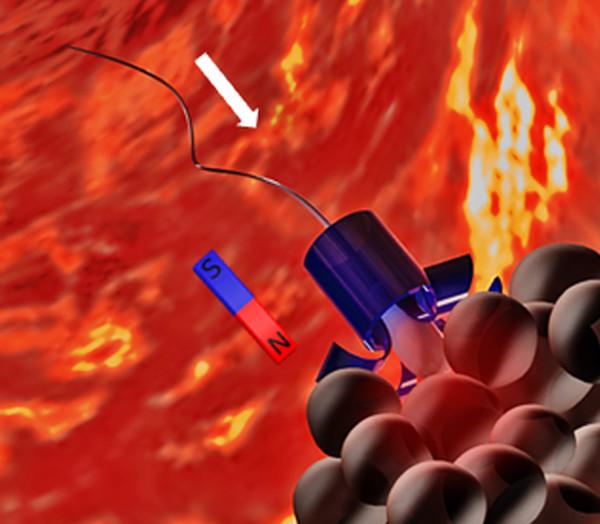
Credit: American Chemical Society
Delivering drugs specifically to cancer cells is one approach researchers are taking to minimize treatment side effects. Stem cells, bacteria and other carriers have been tested as tiny delivery vehicles. Now a new potential drug carrier to treat gynecological conditions has joined the fleet: sperm. Scientists report in the journal ACS Nano that they have exploited the swimming power of sperm to ferry a cancer drug directly to a cervical tumor in lab tests.
Creating an effective way to target cancer cells with drugs is challenging on multiple fronts. For example, the drugs don't always travel deeply enough through tissues, and they can get diluted in body fluids or sidetracked and taken up by healthy organs. To get around these issues, scientists have turned in some cases to loading pharmaceuticals into bacteria, which can effectively contain drug compounds and propel themselves. The microbes can also be guided by a magnetic field or other mechanism to reach a specific target. However, the body's immune system can attack the microbes and destroy them before they reach their target. Looking for another self-propelled cell as an alternative drug carrier to bacteria, Mariana Medina-Sánchez and colleagues at the Leibniz Institute for Solid State and Materials Research–Dresden (IFW Dresden) turned to sperm.
The researchers packaged a common cancer drug, doxorubicin, into bovine sperm cells and outfitted them with tiny magnetic harnesses. Using a magnetic field, a sperm-hybrid motor was guided to a lab-grown tumor of cervical cancer cells. When the harness arms pressed against the tumor, the arms opened up, releasing the sperm. The sperm then swam into the tumor, fused its membrane with that of a cancer cell, and released the drug. When unleashed by the thousands, drug-loaded sperm killed more than 80 percent of a cancerous ball while leaking very little of their payload en route. Further work is needed to ensure the system could work in animals and eventually humans, but researchers say the sperm motors have the potential to one day treat cancer and other diseases in the female reproductive tract.
###
The authors acknowledge funding from the Chinese Scholarship Council and the German Research Foundation.
The abstract that accompanies this study is available here.
The American Chemical Society, the world's largest scientific society, is a not-for-profit organization chartered by the U.S. Congress. ACS is a global leadder in providing access to chemistry-related information and research through its multiple databases, peer-reviewed journals and scientific conferences. ACS does not conduct research, but publishes and publicizes peer-reviewed scientific studies. Its main offices are in Washington, D.C., and Columbus, Ohio.
To automatically receive news releases from the American Chemical Society, contact [email protected].
Follow us on Twitter | Facebook
Media Contact
Katie Cottingham
[email protected]
301-775-8455
@ACSpressroom
http://www.acs.org





